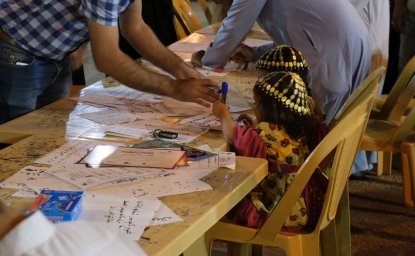159. The Politics of Language Reform In The Yugoslav Successor States

This presentation is devoted to the current status of the language and politics interface among the Yugoslav successor states and entities. By perusing the recently published dictionaries, grammars, orthographic manuals, and polemical articles on the successor languages to Serbo-Croatian, one can examine the viability of the new languages and the prospects for ethnic reconciliation, given the deepening linguistic divide. Since the Serbo-Croatian linguistic union was agreed upon in 1850, language controversies have reflected broader ethnic/political tensions or, in some instances, may have served to spark a worsening of ethnic relations.
It can be argued that Serbs and Croats shared a unified language tradition but never truly had a unified standard language. In order to make such a determination, I define the following three models of linguistic unity: (1) centrally- monitored linguistic unity, whereby the unified language is enforced by a central authority, such as a language academy; (2) government imposed unity, which involves the imposition of a single language or single language variety on the population, often against the will of minority communities; and (3) tolerant unity, which is found especially in federal states with a high degree of language variation and strong regional governments. A variant of this model could be called "imposed tolerant unity," which is favored by non-democratic governments seeking to force ethnic harmony within the nation state.
The Serbs and Croats have attempted all three models of language unity. Centrally-monitored linguistic unity was the goal of the earliest efforts to create a single, unified language for Serbs and Croats through the Literary Agreement of 1850 and the work of Djura Danicic, Tomo Maretic, and others at the Yugoslav Academy of Arts and Sciences (JAZU) in Zagreb. These linguists produced several major works on the "Croatian or Serbian" language. These efforts were in the tradition of Vuk Stefanovic Karadzic's notions of a phonetic orthography, and the elevation of the ijekavian dialect as the literary dialect for all Serbs and Croats.
With the establishment of the first Yugoslavia (1918-1941), the Serbs rebelled against the ijekavian dialect, seeking to impose the Serbian variant throughout the Kingdom. This attempt at imposed unity was vehemently opposed by Croat politicians and resulted in increased Serb/Croat tension, which was further exacerbated by King Aleksandar's imposition of absolute power in 1929.
After World War II, the communist authorities attempted to heal the wounds of imposed unity by insisting upon a new tolerant model of linguistic unity. This was formalized in the 1954 Novi Sad Agreement, which asserted that Serbs, Croats, and Montenegrins share a single language, and that this single language exists in two equal pronunciations--ijekavian and ekavian. The former became known as the "Western norm" (Zagreb) while the latter was called the "Eastern norm" (Belgrade). Tolerant unity was extended to other Serbo-Croatian speaking nations of Yugoslavia (Montenegrins and Muslim Slavs) through the 1974 Federal Yugoslav Constitution, which granted the rights for each republic to establish its own "standard linguistic idiom" for official republican purposes. Such republic-specific variants of Serbo-Croatian were adopted in Bosnia-Herzegovina, Montenegro, and Croatia.
These republican varieties of Serbo-Croatian have served as the precursors to new standard/potential successor languages of Serbo-Croatian. Thus, Croatian, Bosnian, and Serbian have been declared official standard languages. Some linguists have advocated a separate Montenegrin language, but it has not yet emerged as an official language.
The new official languages are still attempting to define their separate identities. The Croatian standard language emerged predominantly with the same linguistic features as that of the former Western variant of Serbo-Croatian. Since 1991, the primary method for infusing Croatian elements into the language is by means of native Slavic/Croat neologisms, many of which have been extracted from obscure 19th-century dictionaries. Whenever "variant forms" were admissible in the former Western variant of Serbo-Croatian, there has been a clear trend toward determining the "proper" Croatian form at the expense of the marginal Croatian or Serbian form. This is the focus of newspaper columns and handbooks designed to promote correct usage among Croatian speakers. Croat linguists have attempted to justify their insistence on a separate language, by claiming that the fact that Serbian and Croatian are so similar should not preclude the existence of a separate Croatian standard language.
Of the four Serbo-Croatian speaking nations of the former Yugoslavia, only the Serbs spoke both the Western/ ijekavian and Eastern/ekavian variants of the language. With the emergence of Serb nationalism in the late 1980's, it is not surprising, therefore, that the official policy would be to establish a new Serbian language that would maintain both dialects in order to preserve Serb unity and enhance the Serb/Montenegrin union. This issue is highly controversial among Serbs and was highlighted when Bosnian Serb leader Radovan Karadzic insisted on replacing the native ijekavian in Republika Srpska with the ekavian dialect of Serbia proper.
With the emergence of Serbian and Croatian as separate, "ethnically pure" languages, it becomes apparent that Bosnian is increasingly becoming identified as the language for Bosnian Muslims. This is reflected in the inclusion of a large inventory of Turkish/Arabic words and the insistence on pronouncing the "h" in many words where it is absent in Serbian or Croatian. Nevertheless, the language presented in both Senahid Halilovic's Orthographic Manual (1996) and Alija Isakovic's Dictionary (1995) is tolerant of language variation, especially when compared to the new Croatian.
In conclusion, whereas the Serbs and Bosnian Muslims have revealed signs of tolerance in their language policies, the Croats have attempted to establish a centrally- monitored language unity for all Croats. These three successor languages compete in Bosnia-Herzegovina, and this has implications for ethnic relations and for the future of the country's educational system. Over the past year, there have been moves to establish separate ethnically-oriented curricula, which has been strongly opposed by the US government. Thus far, little progress has been made to alleviate language controversies within Bosnia-Herzegovina. Language issues could thwart progress towards integration and cooperation both within the Croat-Muslim Federation and between Bosnia's two entities.
Dr. Greenberg spoke at an EES Noon Discussion on April 16 1998.
Author

Global Europe Program
The Global Europe Program is focused on Europe’s capabilities, and how it engages on critical global issues. We investigate European approaches to critical global issues. We examine Europe’s relations with Russia and Eurasia, China and the Indo-Pacific, the Middle East and Africa. Our initiatives include “Ukraine in Europe”—an examination of what it will take to make Ukraine’s European future a reality. But we also examine the role of NATO, the European Union and the OSCE, Europe’s energy security, transatlantic trade disputes, and challenges to democracy. The Global Europe Program’s staff, scholars-in-residence, and Global Fellows participate in seminars, policy study groups, and international conferences to provide analytical recommendations to policy makers and the media. Read more

Explore More
Browse Insights & Analysis
Talking to the Dead to Heal the Living

Russia’s Indigenous Communities and the War in Ukraine

